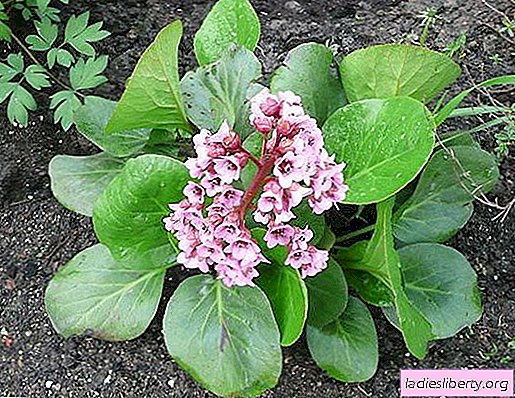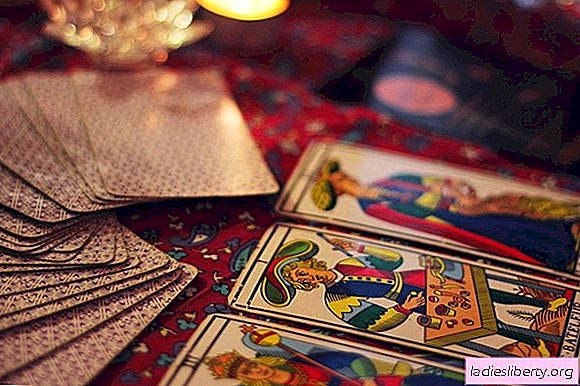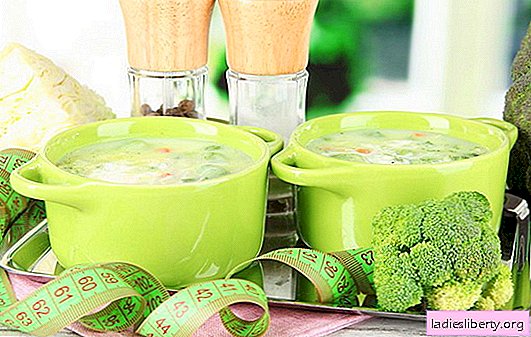
Badan - general description
Badan is a genus of evergreen perennials, less often annuals, belonging to the family Saxifragidae. Badan is characterized by a dense, thick, slightly branching rhizome located in close proximity to the surface. The leaves are round, petiolate, rather large. The top plate of the sheet has a smooth leathery structure.
Red, bright pink or white goblet-shaped flowers are collected in dense racemose-corymbose inflorescences at the very tops of bare, erect stems, the average height of which is 30 cm. The incense blooms in spring, retains its decorativeness until the end of the growing season.
Badan - types and places of growth
Some forms of incense are successfully used for decorating garden plots, imitating the natural landscape in many European countries. The ornamental form and beautiful flowers against a background of dark green leaves create magnificent picturesque compositions almost all year round.
At present, science knows nine main types of incense:
1. Hybrid incense - a "domesticated" type of plant that plays an aesthetic role.
2. Ciliated Badan - lives in Tibet, in the Himalayas. Prefers forest zones and shady places of mountain ledges.
3. Badge of Hissar - a rare relict species is endemic to the Hissar Range. It grows in gorges of mountain rivers, on rocky slopes.
4. Badan hearty - covers Altai.
5. Badan Strechi - its habitats: Central Asia, the Himalayas, Afghanistan. Grows in groups in damp places.
6. Pacific Badan - distributed in the Far East, Korea and China. It occupies a large territory, forming continuous thickets.
7. Badan thick-leaved - found in Altai, in Transbaikalia, Sayan, Tarbagatay, Korea and Mongolia, grows in cedar forests.
8. Badan Schmidt - the result of crossing 2 species. Winter-hardy, unpretentious plant is very popular in Europe.
9. Ugaman Badan - an inhabitant of the Ugamsk Range.
Badan - medicinal properties
Badan is a truly unique creation of nature! Over the centuries, he has been saving people from various diseases. The plant has anti-inflammatory, astringent, antibacterial and diuretic properties. With the help of badan, you can defeat many diseases: dysentery, cervical erosion, fibromyoma, bleeding, candidiasis of the oral cavity, lower blood pressure, in addition, the substances that make up it fight pyogenic microorganisms and suppress putrefactive processes in the body.
The thick-leaf badan contains unique chemical compounds that can repel malignant neoplasms. Mongolian tea based on frankincense eliminates depression, restores efficiency, and saves from fever and diarrhea.
Tibetan medicine uses the plant as an anti-tuberculosis and antipneumonic agent. Badan also helps eliminate digestive problems: heartburn, nausea, bloating, etc.
Badan - dosage forms
The rhizome of the plant gains healing power in the third year of life, it is it used for the preparation of various medicinal "potions". Dig the root in June, then peel, chop and dry in a dark place. The shelf life of the finished dry extract is 4 years.
Badan - recipes
Broth for the treatment of heavy menstruation, postpartum hemorrhage: chop fresh roots, 1 tbsp. l add to boiling water (250 ml), then turn off the stove, let it brew and cool. Strain and take according to Art. spoon 3 r. per day before meals.
Infusion for rinsing the mouth (with candidiasis and bleeding gums): add dry extract to warm boiled water (350 ml), leave for 4-6 hours and rinse your mouth for a day.
Tincture of frankincense for the treatment of bronchopulmonary diseases: pour 40 grams of dry root into one hundred grams of vodka. Close the bottle tightly and leave in a dark place for 10 days. Next, carefully strain, squeezing the roots, and take 30 cap. on 1 tbsp. a spoonful of liquid (three times a day).
Decoction for douching (with gynecological problems): 6 tbsp. tablespoons of roots add to boiling water (400 g) and boil the contents over low heat for about 15 minutes. Dilute a tablespoon of the prepared broth in 1 liter of boiled water and carry out the procedure.
Badan - contraindications
- thrombosis;
- individual intolerance;
- persistent constipation.
Comments











